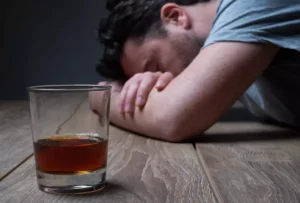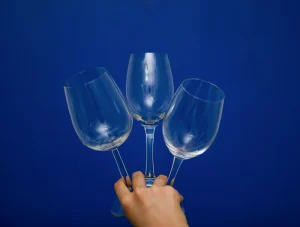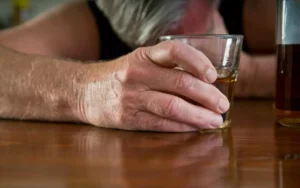The question policy experts typically ask isn’t which drug is more dangerous, but how marijuana and alcohol should be treated through policy as individual drugs with their own set of unique, complicated risks. That doesn’t mean just legalization or prohibition, but regulation, taxes, and education as well. It’s estimated that just under 1% of the world population had some form of drug dependency – excluding alcohol and tobacco. A large driver of this has been a steep rise in opioid deaths over the last decade. Alcohol use disorder is a pattern of alcohol use that involves problems controlling your drinking, being preoccupied with alcohol or continuing to use alcohol even when it causes problems. This disorder also involves having to drink more to get the same effect or having withdrawal symptoms when you rapidly decrease or stop drinking.
Global consumption of spirits
You could also benefit from daily check-ins with a nurse, doctor, and therapist. Your doctor can help you find an in-person treatment program that’s right for you. If your doctor thinks you need more support to stop drinking, they’ll likely refer you to a mental health provider, such as a counselor or therapist.
How do drugs work in the brain?
- Drugs interfere with the way neurons send, receive, and process signals via neurotransmitters.
- The second map shows the estimated average consumption per person.
- Alcohol is one of the world’s largest risk factors for premature death.
- Counseling and other services help you overcome addiction, both in-person and online.
They describe the crisis as evolving in three phases, over several decades from the 1990s. The first phase involved an increase in the use of prescribed opioids as a result of lenient regulations on prescriptions and marketing by pharmaceuticals. The second phase involved a tightening of these restrictions alongside a shift in drug use towards heroin. The third phase – since 2013 – has seen a shift towards synthetic opioids including fentanyl. This has also involved a significant increase in treatment services.
Related research and data
Fortunately, researchers know more than ever about how drugs affect the brain and have found treatments that can help people recover from drug addiction and lead productive lives. Behavioral treatments—also known as alcohol counseling, or talk therapy, and provided by licensed therapists—are aimed at changing drinking behavior. Examples of behavioral treatments are brief interventions and reinforcement approaches, treatments that build motivation and teach skills for coping and preventing a return to drinking, and mindfulness-based therapies.

Adi Jaffe, Ph.D., is a lecturer at UCLA and the CEO of IGNTD, an online company that produces podcasts and educational programs on mental health and addiction. In order for alcohol manufacturers and distributors to stay in business, they must sell primarily to heavy, problematic, addicted drinkers. This targeting is no different from drug dealers, who also rely on regular customers for most of their sales. After all, the casual cocaine user is not the one making billions for the cartels.
Data on the prevalence of binge drinking by age and gender in the UK can be found here, and trends in heavy and binge drinking in the USA can be found here. Again, the prevalence of drinking across North alcohol vs drugs Africa and the Middle East is notably lower than elsewhere. Typically, 5 to 10 percent of adults across these regions drank in the preceding year, and in a number of countries, this was below 5 percent.
- At Beachside Rehab, we know what it is to feel absolutely alone while feeling powerless, held in the grip of an addictive substance.
- Health risks are just one way to measure whether marijuana is safer than alcohol.
- For the other compounds, a discrepancy between animal and human data was detected (see discussion).
- Drinking an extreme amount of alcohol, also known as alcohol poisoning, can be fatal.
Doctors reluctant to treat addiction most commonly report “lack of institutional support” as barrier
If you’re at this stage, alcohol has become the focus of your life, whether you’re able to admit that or not. Your days probably revolve around drinking and when you’ll have your next drink. If you try to cut back, you could feel physically sick or have psychological symptoms, such as hallucinations.
Risk factors
In 2020, the Substance Abuse and Mental Health Services Administration found that half of Americans aged 12 and overused alcohol in the past month. All of this helps prove that marijuana isn’t totally harmless — and some of its risks are likely unknown. Alcohol’s effects on behavior can also lead to more crime, while marijuana use appears to have little-to-no effect. Alcohol is a factor in 40 percent of violent crimes, according to the National Council on Alcoholism and Drug Dependence. But various studies found marijuana doesn’t make users more aggressive or lead to crime.

Alcohol is responsible for many premature deaths each year

Alcohol is also commonly used as a coping mechanism for stress, anxiety, or other discomforting emotions and feelings. This coping mechanism can become a habit that may seem impossible to break. Fortunately, there are many alcohol treatment centers available that offer psychotherapy to help individuals find the motivation https://ecosoberhouse.com/ and hope to begin their recovery process. Get professional help from an online addiction and mental health counselor from BetterHelp. When a person consumes larger quantities of alcohol, specifically more than the body is equipped to process, the drinker is more likely to experience the depressant effects of alcohol.
